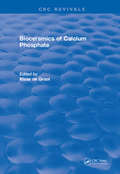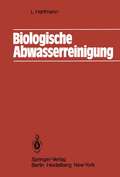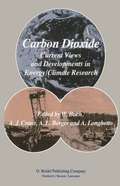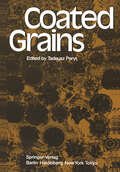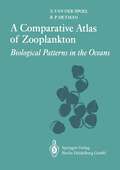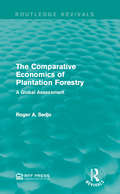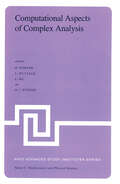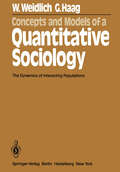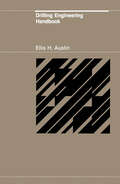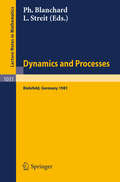- Table View
- List View
Bioceramics Calcium Phosphate
by K. de GrootThe first chapters are fundamental, in that the physical chemistry of calcium phosphate salts is discussed, along with mineralization (with emphasis on teeth) and remodelling of mineralized tissues. Thereafter follows a treatment of the influence of implants o surrounding hard tissues. This topic is followed by a chapter on preparation methods and biomechanical and biological aspects of calcium phosphate implants. In conclusion, two chapters are devoted to (possible) dental and medical applications. It is hoped that basic researchers can use the book in their efforts to improve this promising class of materials further, and that clinicians are inspired to define further possibilities and � at least as important � limitations.
Bioceramics Calcium Phosphate
by K. de GrootThe first chapters are fundamental, in that the physical chemistry of calcium phosphate salts is discussed, along with mineralization (with emphasis on teeth) and remodelling of mineralized tissues. Thereafter follows a treatment of the influence of implants o surrounding hard tissues. This topic is followed by a chapter on preparation methods and biomechanical and biological aspects of calcium phosphate implants. In conclusion, two chapters are devoted to (possible) dental and medical applications. It is hoped that basic researchers can use the book in their efforts to improve this promising class of materials further, and that clinicians are inspired to define further possibilities and � at least as important � limitations.
Biomagnetism: An Interdisciplinary Approach
by Samuel J. Williamson Gian-Luca Romani Lloyd Kaufman Ivo ModenaBiomagnetism is the study of magnetic fields that originate in biological systems. This is a relatively new discipline that has attracted considerable interest throughout the scientific commu- ty. The study of biomagnetic fields requires the use of techniques and concepts drawn from widely disparate scientific disciplines. To make these techniques and concepts available to a wide spectrum of the scientific community, a NATO Advanced study Institute on B- magnetism was held near Frascati at Grottaferrata, Italy, in S- tember 1982. This volume is based on the lectures delivered by scholars representing many different scientific areas, ranging from solid state physics to psychology. It attempts to preserve the - herent development of concepts drawn from physiology, psychology, biology, physics, medicine, occupational health and geology that was evident during the Institute. The reader will quickly become aware that the progress in biomagnetism over the past decade was due principally to the efforts of interdisciplinary teams of sci- tists. One of the purposes of this volume is to make all of the basic principles and findings of biomagnetism available in one place, so that scientists who have already embarked on the study of biomagnetism or who plan to do so in the near future will have them available for study and reference. Each section of this volume was written by a recognized expert who lectured at the Institute on the topics he describes here.
Biomineralization and Biological Metal Accumulation: Biological and Geological Perspectives Papers presented at the Fourth International Symposium on Biomineralization, Renesse, The Netherlands, June 2–5, 1982
by P. Westbroek E. W. De JongBiominerals are generated by the subtle interaction of biological organization and mineral growth. They belong both to the living and the inanimate world and as such their genesis is among the most intri guing and fundamental subjects in science. However, the conceptual and technical resources that are available in physical chemistry and in the biological sciences is often inadequate for the elucidation of the pro blems involved, and hence this field is particularly difficult to ex plore. This may be an important reason why fundamental research on bio mineralization mechanisms has traditionally been carried out by a com paratively small group of scientists. There are signs, however, that the situation is ripe for a change. Various meetings on biomineralization have been organized in the last few years, particularly in the medical sector. It is generally felt that further developments in the therapy of bone and tooth diseases will be largely dependent on an improved understanding of the fundamen tal underlying mechanisms of biomineralization.
Boundary Element Method in Geomechanics (Lecture Notes in Engineering #4)
by W.S. VenturiniNumerical techniques for solving many problems in continuum mechanics have experienced a tremendous growth in the last twenty years due to the development of large high speed computers. In particular, geomechanical stress analysis can now be modelled within a more realistic context. In spite of the fact that many applications in geomechanics are still being carried out applying linear theories, soil and rock materials have been demonstrated experimentally to be physically nonlinear. Soils do not recover their initial state after removal of temporary loads and rock does not deform in proportion to the loads applied. The search for a unified theory to model the real response of these materials is impossible due to the complexities involved in each case. Realistic solutions in geomechanical analysis must be provided by considering that material properties vary from point to point, in addition to other significant features such as non-homogeneous media, in situ stress condition, type of loading, time effects and discontinuities. A possible alternative to tackle such a problem is to inttoduce some simplified assumptions which at least can provide an approximate solution in each case. The validity or accuracy of the final solution obtained is always dependent upon the approach adopted. As a consequence, the choice of a reliable theory for each particular problem is another difficult decision which should be 2 taken by the analyst in geomechanical stress analysis.
Carbon Dioxide: Current Views and Developments in Energy/Climate Research 2nd Course of the International School of Climatology, Ettore Majorana Centre for Scientific Culture, Erice, Italy, July 16–26, 1982
by W. Bach A. J. Crane A. L. Berger A. LonghettoThe International School of Climatology of the "Ettore Majo rana Centre for Scientific Culture" at Erice was founded in 1979, with the aim of organising advanced courses and highly specialized seminars on current problems in the field of climatology. The first course, in March 1980, was devoted to climatic varia tions and variability, the understanding of which lies at the roots of modern climatological research. The publicity given to recent extremes of climate, which have had serious consequences for local populations, has led to an increased awareness of the practical importance of researching the causes and nature of climatic changes on all temporal and spatial scales. In recent decades it has become apparent that man himself is capable, mostly through industrial and agricultural activities, of causing climatic perturbations on both the local and global scales. Although these influences are as yet difficult to detect, it is clear that increasing release of C02 through the expanding use of fossil fuels for energy production is one activity that could lead to significant climatic change. Indeed, by this means, energy use has the potential of being the major influence on climate over the next century, so the choice of this aspect of climate-ener gy interactions as the topic of the Second Course of the Interna tional School of Climatology was an obvious one. It took place from 16 - 26 July, 1982.
Coastal Upwelling Its Sediment Record: Part A: Responses of the Sedimentary Regime to Present Coastal Upwelling (Nato Conference Series #10B)
by Erwin Suess Jörn ThiedeNATO Advanced Research Institutes are designed to explore unre solved problems. By focusing complementary expertise from various disciplines onto one unifying theme, they approach old problems in new ways. In line with this goal of the NATO Science Committee, and with substantial support from the u.s. Office of Naval Research and the Seabed Assessment Program of the U. S. National Science Founda tion, such a Research Institute on the theme of Coastal Upwelling and Its Sediment Record was held september 1-4, 1981, in Vilamoura, Portugal. The theme implies a modification of uniformitarian thinking in earth science. Expectations were directed not so much towards find ing the key to the past as towards exploring the limits of interpret ing the past based on present upwelling oceanography. Coastal up welling and its imprint on sediments are particularly well-suited for such a scientific inquiry. The oceanic processes and conditions characteristic of upwelling are well understood and are a well packaged representation of ocean science that are familiar to geolo gists, just as the magnitude of bioproduction and sedimentation in upwelling regimes --among other biological and geological processes- have made oceanographers realize that the bottom has a feedback role for their models.
Coated Grains
by DrCoated grains have always attracted attention, at first of naturalists, and later of geologists, and the interest in these peculiar bodies was re lated both to their intriguing form and their significance in facies inter pretation and sedimentology and to their relevance to accumulations of hydrocarbons and other mineral deposits. This resulted in numerous publications on this subject, and the intention of this volume is to sum marize the present state of knowledge on coated grains. The idea of the book was to unite some general papers with papers reporting case studies of both recent and ancient coated grains. The organization of the book follows this intention. The papers presented in this volume have been invited by the editor; the theme of the book merits a few words of personal history. The development of studies of coated grains during the last two decades has not only resulted in a great increase in knowledge of recent and ancient environments of coated grain formation, but also numerous important and controversial questions of classification, environmental significance, mineralogical composition etc. of ancient coated grains have arisen. To answer these questions, in 1978 I started the study of many ancient and recent occurrences of coated grains at the Institut fUr Geologie, Ruhr-UniversiUH Bochum, following the invitation of Hans Fiichtbauer and sponsored by the Alexander von Humboldt-Stiftung.
The Collector’s Book of Fluorescent Minerals
by Manuel A. RobbinsOver the last several decades, the number of people who are actively involved in the hobby or science of mineral collecting has grown at an increasing pace. In response to the growing demand for informa tion which this large and active group has created, a number of books have been published dealing with mineralogy. As a result, the reader now has a choice among mineral locality guides, field handbooks, photo collections, or books dedicated to the systematic description of minerals. However, as interest in mineralogy has grown, as collectors have become increasingly knowledgeable and aware of mineralogy in its many facets, the need for more specialized information has also grown. Nowhere is this need greater than in the subject of the fluorescence of minerals. The number of collectors who now main tain a fluorescent collection is substantial, interest is constantly increasing, and manufacturers have recently responded by the intro duction of new ultraviolet equipment with major improvements in utility and performance. Yet when the collector searches for any information on this subject, little will be found. He or she will seek in vain for the answers to questions which present themselves as in terest in fluorescent minerals grows and matures. Which minerals fluoresce? Where are fluorescent minerals found? What makes a mineral fluoresce? Why does ultraviolet light produce fluorescence? What is an activator, and how does it contribute to fluorescence? On these matters, the available mineralogy books are largely silent.
The Comparative Economics of Plantation Forestry: A Global Assessment (Routledge Revivals)
by Roger A. SedjoPlantation forestry is the planting, managing, and harvesting of trees for the production of industrial wood. Originally published in 1983, the principal focus and contribution of the study lies in Roger Sedjo’s examination of the economic returns in twelve forest regions throughout the world. The results of the analysis strongly demonstrate the feasibility of major expansion of plantation forestry in a number of areas around the world and suggest the likelihood of major shifts in the principal supply areas. The results also have potentially important implications for countering the threats of deforestation. This title will be of interest for students of Environmental Studies.
The Comparative Economics of Plantation Forestry: A Global Assessment (Routledge Revivals)
by Roger A. SedjoPlantation forestry is the planting, managing, and harvesting of trees for the production of industrial wood. Originally published in 1983, the principal focus and contribution of the study lies in Roger Sedjo’s examination of the economic returns in twelve forest regions throughout the world. The results of the analysis strongly demonstrate the feasibility of major expansion of plantation forestry in a number of areas around the world and suggest the likelihood of major shifts in the principal supply areas. The results also have potentially important implications for countering the threats of deforestation. This title will be of interest for students of Environmental Studies.
Computational Aspects of Complex Analysis: Proceedings of the NATO Advanced Study Institute held at Braunlage, Harz, Germany, July 26 – August 6, 1982 (Nato Science Series C: #102)
by K. E. Werner L. Wuytack E. NgThe NATO Advanced study Institute (ASI) on "Computational Aspects of Complex Analysis" was held at Braunlage/Harz (Germany) from July 26 to August 6, 1982. These proceedings contain the invited lectures presented at this institute, the aim of which was to bring together scientists from pure and applied mathematics as well as computer scientists. The main topics were problems dealing with approximation and interpolation by polynomial and rational functions (in particular Pade approximation), numerical methods for the solution of algebraic equations and differential equations, the large field of conformal mapping, aspects of computer imple mentation of complex arithmetic and calculations based on complex variable techniques. The sessions on short communications not only provided a platform for the presentation of contributions by the participants of the ASI but also the opportunity to discuss the material more thoroughly, to bring up open problems and to point out the inter relationship of the above mentioned topics. Quite naturally the short communications grouped around the topics of the main lectures. The stimulating atmosphere caused many discussions to continue privately for hours. Even out of the social program there emanated two short communications by L. Wuytack and L. Trefethen, which are included at the end of these proceedings. We gratefully appreciate the support of the International Advisory Committee that was formed by L. Collatz, Germany, C. Brezinski, France, G. Golub, U.S.A., P. Henrici, Switzerland, J. van Hulzen, the Netherlands, O. Skovgaard, Denmark, I. Sneddon, United Kingdom, and J. Todd, U.S.A.
Computational Methods for Fluid Flow (Scientific Computation)
by Roger Peyret Thomas D. TaylorIn developing this book, we decided to emphasize applications and to provide methods for solving problems. As a result, we limited the mathematical devel opments and we tried as far as possible to get insight into the behavior of numerical methods by considering simple mathematical models. The text contains three sections. The first is intended to give the fundamen tals of most types of numerical approaches employed to solve fluid-mechanics problems. The topics of finite differences, finite elements, and spectral meth ods are included, as well as a number of special techniques. The second section is devoted to the solution of incompressible flows by the various numerical approaches. We have included solutions of laminar and turbulent-flow prob lems using finite difference, finite element, and spectral methods. The third section of the book is concerned with compressible flows. We divided this last section into inviscid and viscous flows and attempted to outline the methods for each area and give examples.
Computational Methods in Bifurcation Theory and Dissipative Structures (Scientific Computation)
by M. Kubicek M. Marek"Dissipative structures" is a concept which has recently been used in physics to discuss the formation of structures organized in space and/or time at the expense of the energy flowing into the system from the outside. The space-time structural organization of biological systems starting from the subcellular level up to the level of ecological systems, coherent structures in laser and of elastic stability in mechanics, instability in hydro plasma physics, problems dynamics leading to the development of turbulence, behavior of electrical networks and chemical reactors form just a short list of problems treated in this framework. Mathematical models constructed to describe these systems are usually nonlinear, often formed by complicated systems of algebraic, ordinary differ ential, or partial differential equations and include a number of character istic parameters. In problems of theoretical interest as well as engineering practice, we are concerned with the dependence of solutions on parameters and particularly with the values of parameters where qualitatively new types of solutions, e.g., oscillatory solutions, new stationary states, and chaotic attractors, appear (bifurcate). Numerical techniques to determine both bifurcation points and the depen dence of steady-state and oscillatory solutions on parameters are developed and discussed in detail in this text. The text is intended to serve as a working manual not only for students and research workers who are interested in dissipative structures, but also for practicing engineers who deal with the problems of constructing models and solving complicated nonlinear systems.
Concepts and Models of a Quantitative Sociology: The Dynamics of Interacting Populations (Springer Series in Synergetics #14)
by W. Weidlich G. HaagWhile the volumes hitherto published in the Springer Series in Synergetics have been devoted almost exclusively to the self-organized formation of structures in physics, chemistry and biology, the present monograph by Weidlich and Haag deals with the formation of "structures" (or "patterns") in society. At first glance it would seem a daring enterprise to deal with the complex processes in society using concepts and methods first developed in physics. But over the past decade it has been shown that there is a large class of phenomena in a variety of fields to which unifying concepts can be applied. This is particulary true of situations in which a system composed of many parts or individuals acquires a new structure on macroscopic scales. Indeed, this is the definition of synergetics which I formulated more than a decade ago, and which formed the basis of my survey on the profound analogies in the behaviour of complex systems, includ ing those of sociology (H. Haken: Synergetics. An Introduction, Volume 1 of this series). As I have pointed out on many occasions, the universal validity of these concepts is neither accidental nor is it caused by a mere extension of physical rules to other fields, but is instead a consequence of deep-rooted struc tural properties of systems of interacting parts which are due to rigorous mathe maticallaws. Generally speaking, concepts and methods originally used in physics can be applied to sociological phenomena in two ways.
Cosmochemistry and the Origin of Life: Proceedings of the NATO Advanced Study Institute held at Maratea, Italy, June 1–12, 1981 (Nato Science Series C: #101)
by Cyril PonnamperumaFor the first time in human history, developments in many branches of science provide us with an opportunity of formula ting a comprehensive picture of the universe from its beginning to the present time. It is an awesome reflection that the carbon in our bodies is the very carbon which was generated during the birth of a star. There is a perceptible continuum through the billions of years which can be revealed by the study of chemistry. Studies in nucleosynthesis have related the origin of the elements to the life history of the stars. The chemical elements we find on earth, HYdrogen, Carbon, Oxygen, and Nitrogen, were created in astronomical processes that took place in the past, and these elements are not spread throughout space in the form of stars and galaxies. Radioastronomers have discovered a vast array of organic molecules in the interstellar medium which have a bearing on prebiological chemical processes. Many of the molecules found so far contain the four elements, C, N, 0, H. Except for the chem ically unreactive He, these four elements are the most abundant in the galaxy. The origin of polyatomic interstellar molecules is an unresolved problem. While we can explain the formation of some diatomic molecules as due to two atom collisions, it is much more difficult to form polyatomic molecules by collisions between diatomic molecules and atoms. There may be other produc tion mechanisms at work such as reactions taking place on the surface of interstellar dust grains.
A Course in Mathematical Physics: Volume 4: Quantum Mechanics of Large Systems
by Walter ThirringIn this final volume I have tried to present the subject of statistical mechanics in accordance with the basic principles of the series. The effort again entailed following Gustav Mahler's maxim, "Tradition = Schlamperei" (i.e., filth) and clearing away a large portion of this tradition-laden area. The result is a book with little in common with most other books on the subject. The ordinary perturbation-theoretic calculations are not very useful in this field. Those methods have never led to propositions of much substance. Even when perturbation series, which for the most part never converge, can be given some asymptotic meaning, it cannot be determined how close the nth order approximation comes to the exact result. Since analytic solutions of nontrivial problems are beyond human capabilities, for better or worse we must settle for sharp bounds on the quantities of interest, and can at most strive to make the degree of accuracy satisfactory.
Developments in Geophysical Exploration Methods—4
by A. A. FitchGeophysical prospecting is an applied science and the range of scientific principles to be applied is very wide. In this collection of original papers, the application of many different principles is described in the search for sulphides, other metallic ores and radioactive deposits. The papers are all concerned with surface observations and cover both the theory and the practice of the methods used. In all cases the advan tages and disadvantages of the methods are described and their role in the detection of mineral deposits is discussed and placed in context. Electromagnetic methods are covered in detail, involving the use of both electric and magnetic field effects. Techniques are described involv ing observations both at a number of discrete frequencies and with continuously changing frequency. In spite of the diversity of method it is interesting to note the strong links between the papers; two chapters, for example, start from the same fundamental illustration, first published by Won, of the basic relationship between source frequency, ground con ductivity and depth of penetration. The all-important economic aspects are not forgotten and the first chapter assesses the statistics of performance and describes their use in the shaping and management of an exploration programme. The editor takes this opportunity to thank the busy men who have set aside time to write these contributions.
Differential Equations and Their Applications: An Introduction to Applied Mathematics (Applied Mathematical Sciences #15)
by Martin BraunThere are three major changes in the Third Edition of Differential Equations and Their Applications. First, we have completely rewritten the section on singular solutions of differential equations. A new section, 2.8.1, dealing with Euler equations has been added, and this section is used to motivate a greatly expanded treatment of singular equations in sections 2.8.2 and 2.8.3. Our second major change is the addition of a new section, 4.9, dealing with bifurcation theory, a subject of much current interest. We felt it desirable to give the reader a brief but nontrivial introduction to this important topic. Our third major change is in Section 2.6, where we have switched to the metric system of units. This change was requested by many of our readers. In addition to the above changes, we have updated the material on population models, and have revised the exercises in this section. Minor editorial changes have also been made throughout the text. New York City Martin Braun Nooember, 1982 Preface to the First Edition This textbook is a unique blend of the theory of differential equations and their exciting application to "real world" problems. First, and foremost, it is a rigorous study of ordinary differential equations and can be fully understood by anyone who has completed one year of calculus. However, in addition to the traditional applications, it also contains many exciting "real life" problems. These applications are completely self contained.
Differential Geometry and Mathematical Physics: Lectures given at the Meetings of the Belgian Contact Group on Differential Geometry held at Liège, May 2–3, 1980 and at Leuven, February 6–8, 1981 (Mathematical Physics Studies #3)
by M. Cahen M. DeWilde L. Lemaire L. VanheckeThis volume contains the text of the lectures which were given at the Differential Geometry Meeting held at Liege in 1980 and at the Differential Geometry Meeting held at Leuven in 1981. The first of these meetings was more orientated toward mathematical physics; the second has a stronger flavour of analysis. The Editors are pleased to thank the lectures who contributed scientifically to these two meetings. They are also grateful to Professor M. F1ato who has encouraged publication of these contributions in the Mathematical Physics Studies Series. We also thank the F.N.R.S. who supported financially the Contact group in differential geometry. The Universite de Liege and the Katholieke Universiteit Leuven which have given us a warm hospitality have contributed to the success of these meetings. We express our gratitude. The Editors. M. Caken et al. (6ds.), Differential Geametry and Mathematical Physics, vii. vii Copyright e 1983 by D. Reidel Publishing Company. Lectures given at the Meeting of the Belgian Contact Group on Differential Geometry held at Liege, May 2-3,1980 SIMULTANEOUS DEFORMATIONS OF A LIE ALGEBRA AND ITS MODULES D. Arnal University of Dijon INTRODUCTION We expose here some results which are obtained by a team at the University of Dijon. This team included Jean-Claude Cortet, Georges Pinczon and myself.
Drilling Engineering Handbook
by E.H. AustinThis book presents the fundamental principles of drilling en gineering, with the primary objective of making a good well using data that can be properly evaluated through geology, reservoir engineering, and management. It is written to assist the geologist, drilling engineer, reservoir engineer, and manager in performing their assignments. The topics are introduced at a level that should give a good basic understanding of the subject and encourage further investigation of specialized interests. Many organizations have separate departments, each per forming certain functions that can be done by several methods. The reentering of old areas, as the industry is doing today, particularly emphasizes the necessity of good holes, logs, casing design, and cement job. Proper planning and coordination can eliminate many mistakes, and I hope the topics discussed in this book will playa small part in the drilling of better wells. This book was developed using notes, comments, and ideas from a course I teach called "Drilling Engineering with Offshore Considerations." Some "rules of thumb" equations are used throughout, which have proven to be helpful when applied in the ix x / Preface proper perspective. The topics are presented in the proper order for carrying through the drilling of a well.
